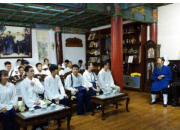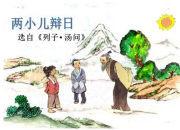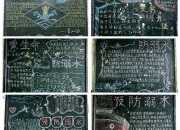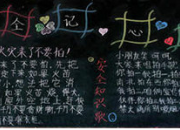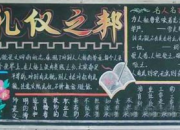万圣节的由来英文版
时间:2021-08-31万圣节(All Saints' Day)是西方传统节日,每年的10月30日被称为万圣节前夕。中国国内往往直接用“万圣节”指“万圣节前夜”,而用“万灵节”或“诸圣节”表示11月1日的All Saints' Day。当晚小孩会穿上化妆服,戴上面具,挨家挨户收集糖果。万圣节通常与灵异的事物联系起来。欧洲传统上认为万圣夜是鬼怪世界最接近人间的时间,这传说与东亚的中元节与盂兰节以及日本的百鬼夜行类似。美国明尼苏达州的`阿诺卡(Anoka)号称是“世界万圣夜之都”,每年都举行大型的巡游庆祝。
万圣节的由来英文版:
All Saints' Day, feast of the Roman Catholic and Anglican churches, and day on which churches glorify God for all God's saints, known and unknown. It is celebrated on Nov. 1 in the West, since Pope Gregory IV ordered its church-wide observance in 837. Its origin lies earlier in the common commemorations of martyrs who died in groups or whose names were unknown, which were held on various days in different parts of the Church; over time these celebrations came to include not only the martyrs but all saints. During the Reformation the Protestant churches understood “saints” in its New Testament usage as including all believers and reinterpreted the feast of All Saints as a celebration of the unity of the entire Church. In medieval England the festival was known as All Hallows, hence the name Halloween [=All Hallows' eve] for the preceding evening.
The Celtic people, who lived more than 2000 years ago feared the evening of Oct. 31 more than any other day of the year. It was the eve of their festival of Samhain. Samhain was a joyful harvest festival that marked the death of the old year and the beginning of a new one. The day itself was a time for paying homage to the sun god Baal who had provided the people with the ripened grain for use in the upcoming winter. Come evening evil spirits were everywhere. Charms and spells were said to have more power on the eve of Samhain. Several rituals were performed by the Celtic priests, Druids, to appease the Lord of the Dead.
Halloween was called Samhain by the Irish. It came to be known as Halloween sometime around the fifth century A.D. .
Samhain took place on October 31 through to November 1. During this period, it was believed that the boundaries between our world and the world of the dead were weakened, allowing spirits of the recently dead to cross over and possess the living.
To celibrate the festival, the Irish would dress up in bizarre costumes and parade through their villages, causing destruction and saying "Trick-or-Treat", in order to scare off any recently departed souls who might be prowling for bodies to inhabit.
This yearly festival was later brought to the other regions of the world, including continental Europe and North America. Irish immigrants brought several customs with them, including one of the symbols most commonly associated with Halloween -- the "Jack Lantern".
According to Irish folklore, there once lived a man named Jack who was known for being a drunk and a prankster. One night Jack tricked the devil into climbing a tree, and quickly carved an image of a cross on the trunk, trapping the devil. Jack then made him promise that, in exchange for letting him out of the tree, the Devil would never tempt him to sin again. He reluctantly agreed, but was able to exact his revenge upon Jack's death. Because of his mischievous ways in life, Jack was barred from entering heaven and because of his earlier trick; he was also barred from hell. So he was doomed to wander the earth until the end of time, with only a "Jack Lanterns" to warm him.
In Ireland, they originally used turnips for their "Jack Lanterns", but upon arriving in north America, they discovered that pumpkins were abundant and easier to carve out.
【万圣节的由来英文版】相关文章:
1.万圣节的由来



